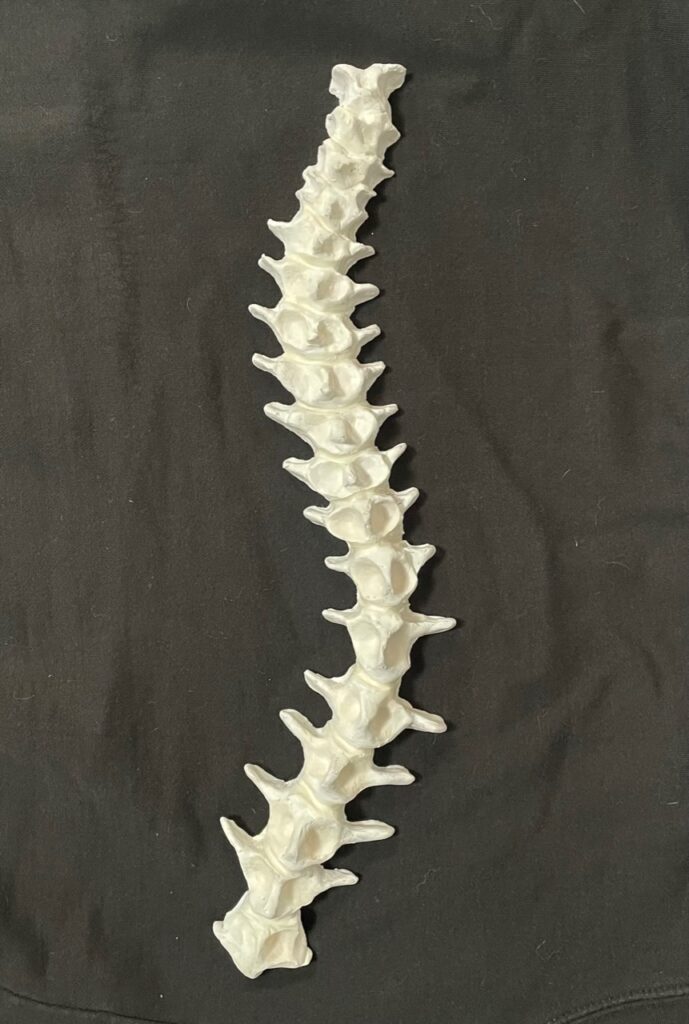
I did my project on scoliosis caused by cerebral palsy. Here is a sculpture of scoliosis in the thoracic spine.
itemprop="discussionURL"One Comment

I did my project on scoliosis caused by cerebral palsy. Here is a sculpture of scoliosis in the thoracic spine.
itemprop="discussionURL"One CommentThis is a model I printed and painted, showing some of the muscles in the hand (among other tissues) that would be affected by muscle weakness and spasticity in a stroke victim.
Don’t mind the missing thumb. The print partially failed. To make do with what I had, I painted in a digital-like effect to make the model look like a hologram that bugged out for a moment.
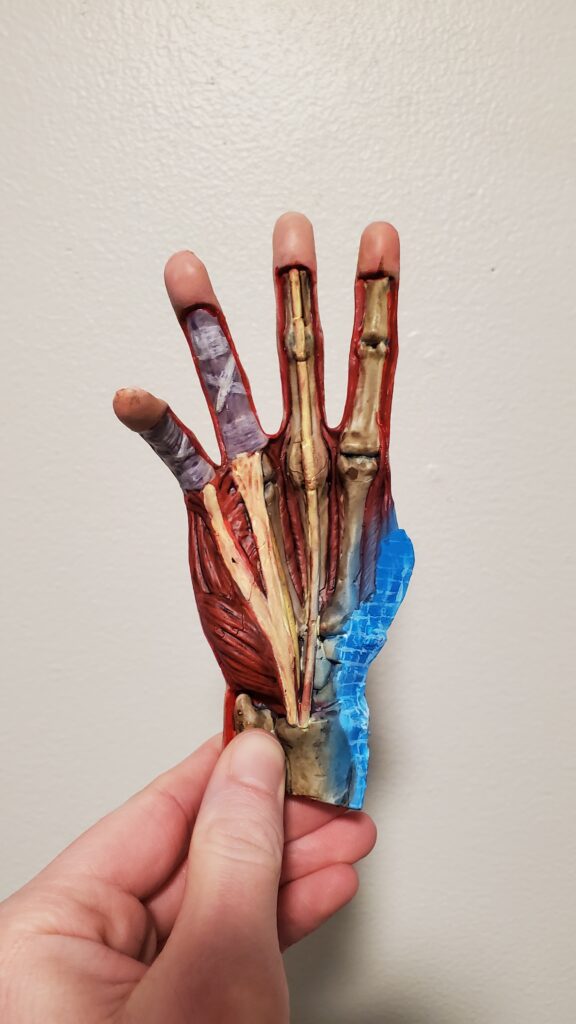
The course objective I focused on was the progressive impact of aging on tissue. I chose to research arthritis of the thumb, also known as the CMC joint arthritis. My project walks you through the various steps from defining what it is, to the symptoms, causes, explain who is at risk of developing it, when you should see a doctor, and what happens during the doctor’s office visit. I also briefly explain the treatments available for this type of arthritis such as non-surgical, intermittent out of office procedure, and surgical. I chose to use the comic strip art to walk the reader through a fun and easy model to get a better understanding of arthritis of the thumb.
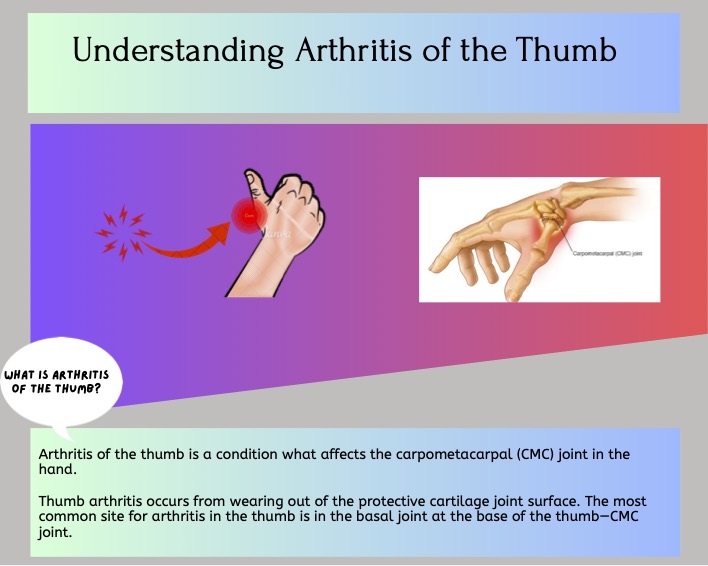

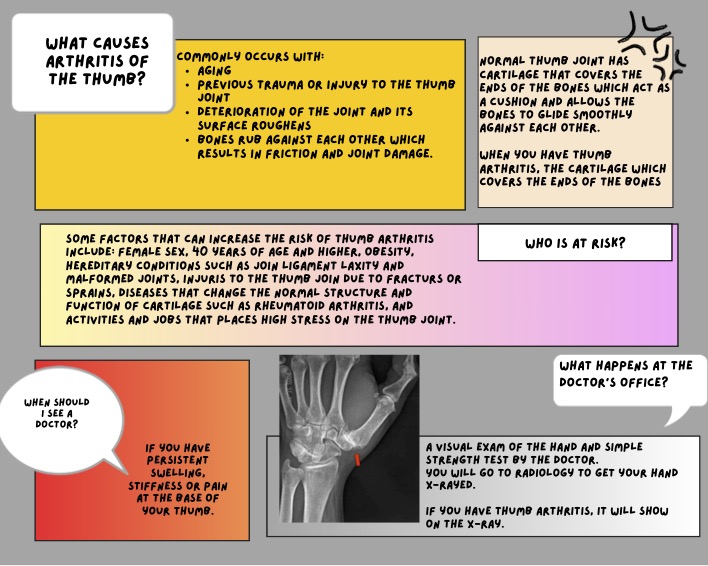
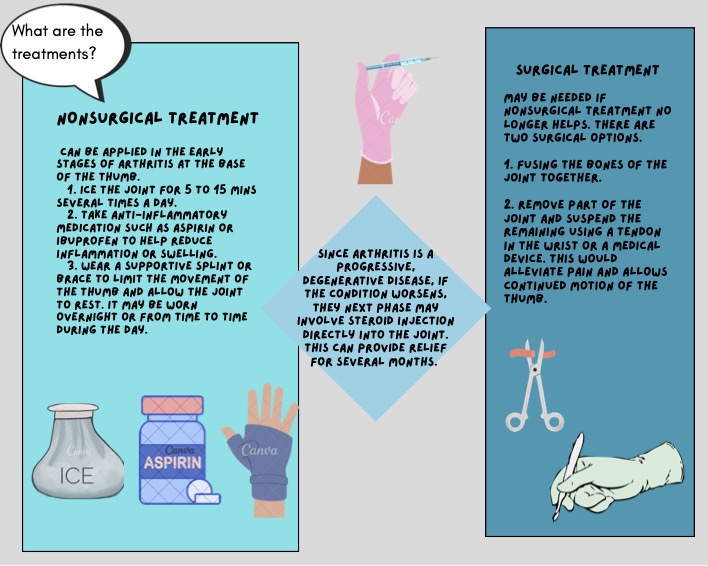
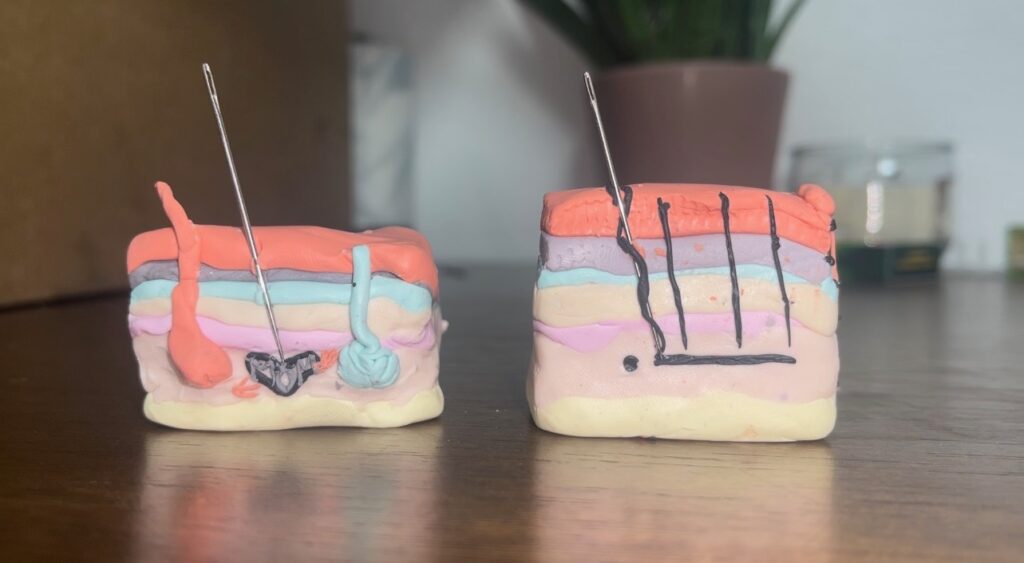
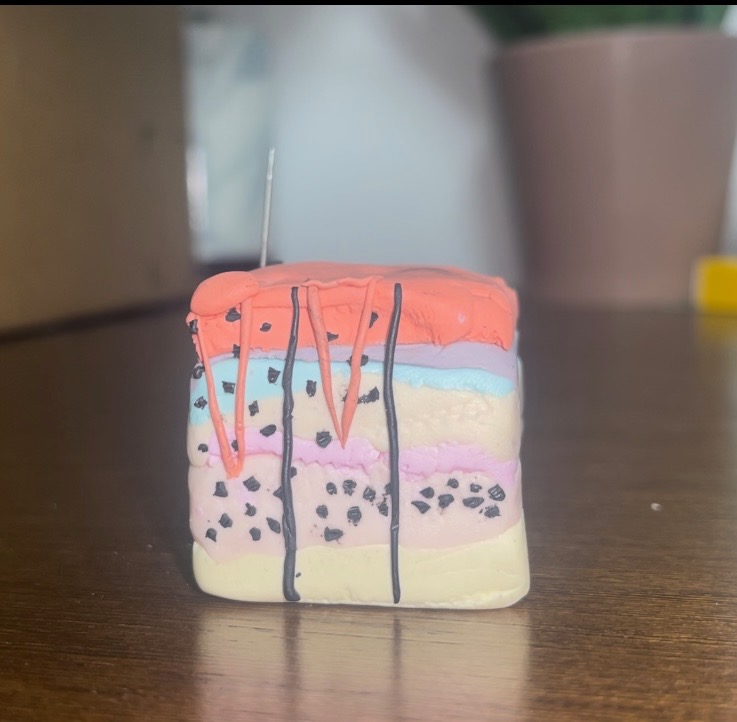
A living canvas; I did my steam project on tattooing and how they insert the ink to allow for these permanent images without our body being able to removing the ink. My project also covers healing of the wounds from the needles used to tattoo the skin.
Course objective: “Describe in depth each type of epithelial and connective tissue. Be able to describe their function and location.”
itemprop="discussionURL"One Comment